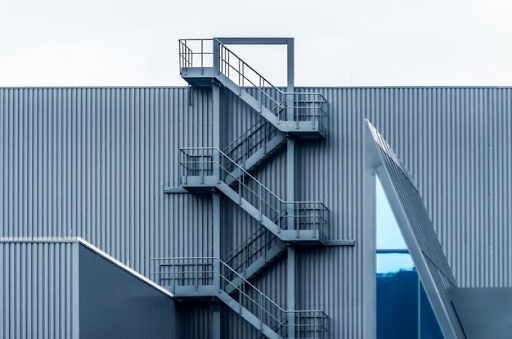7 Benefits of ACM Panels: A Versatile Building Material


Max Shafer
Max Shafer, a distinguished BPA Advisor specializing in Roofing & Exterior Finishes, is passionate about sharing his extensive knowledge and expertise. Max's impactful work as a writer is prominently featured throughout Building Product Advisor. With a specific focus on roofing and exterior finishes, Max contributes valuable insights that shape discussions on cutting-edge construction practices and materials in these crucial areas.

In the ever-evolving field of construction and architecture, choosing the right materials can make all the difference in the outcome of a project. One such versatile material that has gained popularity in recent years is ACM, or Aluminum Composite Material, panels. ACM panels are renowned for their unique combination of properties, making them suitable for a wide range of applications. In this article, we will explore seven key benefits of ACM panels and how they can enhance architectural projects.
1. Lightweight Construction
ACM panels are known for their lightweight nature, a characteristic that can greatly simplify the construction process. The core material, typically made of polyethylene, is lightweight, while the aluminum sheets used for the panel faces are also thin. This makes ACM panels easy to transport, handle, and install, reducing labor and transportation costs. Additionally, the lightweight nature of ACM panels allows for more flexible design possibilities, as they place less structural stress on the building's framework.
2. Durability and Weather Resistance
While ACM panels are lightweight, they are by no means fragile. In fact, they are highly durable and capable of withstanding various environmental conditions. The aluminum sheets provide protection against corrosion, and the panels are resistant to damage from UV rays, moisture, and temperature fluctuations. This durability ensures that ACM-clad structures maintain their appearance and functionality over time, reducing maintenance costs and extending the lifespan of the building.
3. Versatility in Design

Architects and designers appreciate the versatility of ACM panels when it comes to aesthetics. These panels are available in a wide array of colors, finishes, and textures, allowing for endless design possibilities. Whether you're aiming for a sleek, modern look or a more traditional appearance, ACM panels can be customized to achieve the desired visual effect. The material can even mimic the appearance of other materials like wood or stone, providing cost-effective alternatives without sacrificing aesthetics.
4. Ease of Installation
ACM panels are relatively easy to install, thanks to their lightweight composition and the availability of various installation systems. Depending on the project's requirements, ACM panels can be attached using mechanical fixing methods or adhesive bonding. This ease of installation not only saves time and labor but also minimizes the disruptions often associated with construction projects.
5. Energy Efficiency
In today's world, energy efficiency is a top priority for both commercial and residential buildings. ACM panels can contribute to energy efficiency by providing insulation properties through the core material. This helps regulate the temperature inside the building, reducing the need for excessive heating or cooling. As a result, energy consumption is lowered, leading to cost savings and a smaller carbon footprint.
6. Fire Resistance Options
While ACM panels are not inherently fireproof, they can be manufactured to meet specific fire safety requirements. Fire-rated ACM panels are available for applications where fire resistance is a concern. These panels are designed to limit the spread of flames and smoke in the event of a fire, providing added safety in buildings with stringent fire codes.
7. Low Maintenance Requirements

ACM panels are not only durable but also require minimal maintenance. Regular cleaning with mild detergents and water is usually sufficient to keep them looking pristine. Unlike some other building materials that may require repainting or refinishing over time, ACM panels maintain their appearance without extensive upkeep. This low-maintenance characteristic is particularly appealing to building owners and property managers looking to reduce long-term maintenance costs.
ACM Panels are Shaping the Future of Construction
ACM panels have become a go-to choice for architects, builders, and designers seeking a versatile, cost-effective, and aesthetically pleasing building material. Their lightweight construction, durability, design flexibility, ease of installation, energy efficiency, fire resistance options, and low maintenance requirements make them a compelling option for a wide range of projects.
When considering ACM panels for a construction or renovation project, it's crucial to work with reputable suppliers and manufacturers who adhere to quality standards and safety regulations. By doing so, you can leverage the numerous benefits of ACM panels to enhance the durability, aesthetics, and overall performance of your architectural endeavors. Whether it's a commercial building, residential development, or interior design project, ACM panels offer a reliable solution that continues to shape the future of construction and architecture.
Author Bio
Brian Jeffries is a freelance writer that loves sharing his knowledge and expertise on construction projects and materials. He lives in Winter Park, Florida where he enjoys spending time with his wife and working on projects in his spare time.
Get Smarter About Building Products
Join 50,000+ subscribers and get our 3 min daily newsletter on what matters in the building materials industry.
You might like this


Toolbox Treasures: Exploring Must-Have Construction Components
Constructing a building, whether it’s a towering skyscraper or a cozy home, is a complex puzzle that requires a skilled hand and the right set of tools. In the world of construction, having the right components in your toolbox can make all the difference. From sealers that protect against the elements to essential hardware that […]


7 Advantages of Insulated Concrete Forms (ICFs) in Sustainable Construction
In the ever-evolving landscape of construction, the emphasis on sustainable building practices has become paramount. Among the innovative solutions revolutionizing the industry, Insulated Concrete Forms (ICFs) stand out as a versatile and eco-friendly alternative, offering a myriad of advantages in the realm of sustainable construction. 1. Energy Efficiency at its Core At the heart of […]


Clean & Safe: Mastering Jobsite Cleanup for a Secure Workplace
A well-organized and clean job site is not just a matter of appearances- it plays a crucial role of ensuring safety and security to any jobsite. A tidy space reduces the chances of accidents, promotes better focus, and boosts employee morale. Plus, it sends a clear message that the organization values the health and safety […]